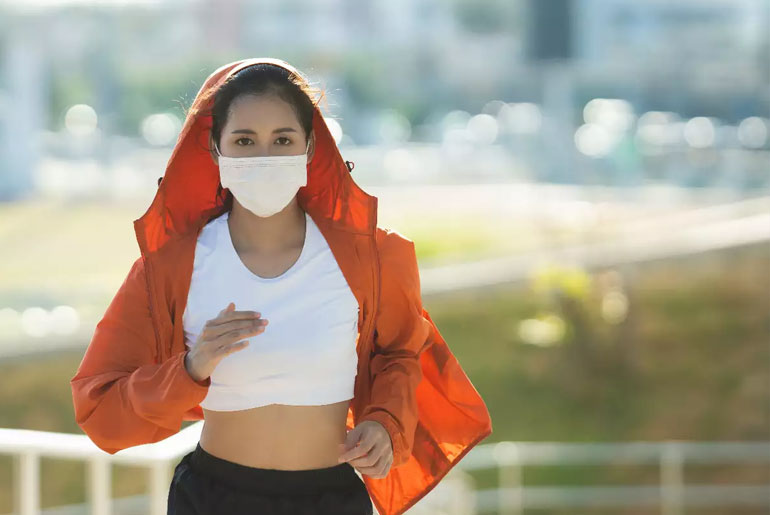In the pursuit of a healthier lifestyle, outdoor exercise is a preferred choice for numerous individuals. The advantages of inhaling fresh air while engaging in physical activity are undeniable. Nevertheless, the escalating issue of air pollution in various regions of India has underscored the importance of discerning when outdoor exercise may pose health risks. To address this concern, the Air Quality Index (AQI) emerges as a reliable tool for gauging the feasibility of engaging in outdoor physical activities. Much like a Yelp rating for air quality, the AQI categorizes air conditions into color-coded categories, providing clear guidance on when it is safe or hazardous to exercise outdoors.
As air quality concerns intensify, understanding and monitoring the AQI has become increasingly essential for those seeking to balance their fitness goals with environmental health considerations. By referring to the AQI’s color-coded categories, individuals can make informed decisions about when to enjoy outdoor exercise without compromising their well-being. This awareness is paramount, especially in regions where air pollution is a prevalent issue, allowing people to continue their quest for a healthier lifestyle while safeguarding their respiratory health.
The specific AQI levels at which it becomes unsafe to exercise outdoors can vary depending on individual sensitivity, age, and health conditions. However, as a general guideline, many health authorities recommend the following:
1. Good (0-50 AQI):
Air quality is considered safe for outdoor activities.
2. Moderate (51-100 AQI):
Air quality is generally acceptable for outdoor activities, but individuals with respiratory conditions may experience mild discomfort.
3. Unhealthy for Sensitive Groups (101-150 AQI):
Outdoor exercise may be unsafe for individuals with respiratory or heart conditions, children, and older adults. They should limit prolonged or heavy exertion.
4. Unhealthy (151-200 AQI):
Everyone may begin to experience health effects, and members of sensitive groups should avoid outdoor activities. Others should reduce or avoid prolonged or heavy exertion.
5. Very Unhealthy (201-300 AQI):
Outdoor activity is not safe for anyone. Everyone should avoid outdoor exertion.
6. Hazardous (301-500 AQI):
Health alert. Everyone should refrain from outdoor exertion.
It’s essential to monitor local air quality and follow the guidance from local health authorities and the Environmental Protection Agency (EPA) to determine when it’s safe to exercise outdoors. Additionally, people with preexisting health conditions should consult their healthcare providers for personalized recommendations regarding outdoor exercise in different air quality conditions.
The potential risks of exercising outdoors in poor Air Quality Index (AQI) conditions, emphasizing the adverse health effects that can result from breathing polluted air. These effects range from respiratory issues and the exacerbation of pre-existing conditions to a reduction in exercise performance. Short-term consequences may manifest as coughing, wheezing, and irritation, while long-term exposure to poor air quality can elevate the risk of chronic respiratory and cardiovascular diseases. Dr. Karim advises individuals to stay vigilant about AQI levels and consider indoor exercise alternatives when air quality is subpar.
Whether at gyms or in the comfort of one’s home, is a safer option during periods of poor air quality. He also points out the potential benefits of using air purifiers to improve indoor air quality, thereby mitigating the impact of outdoor air pollution. This advice highlights the importance of taking proactive steps to safeguard health when environmental conditions are less than optimal for outdoor exercise.
Disclaimer:
The information contained in this article is for educational and informational purposes only and is not intended as a health advice. We would ask you to consult a qualified professional or medical expert to gain additional knowledge before you choose to consume any product or perform any exercise.








